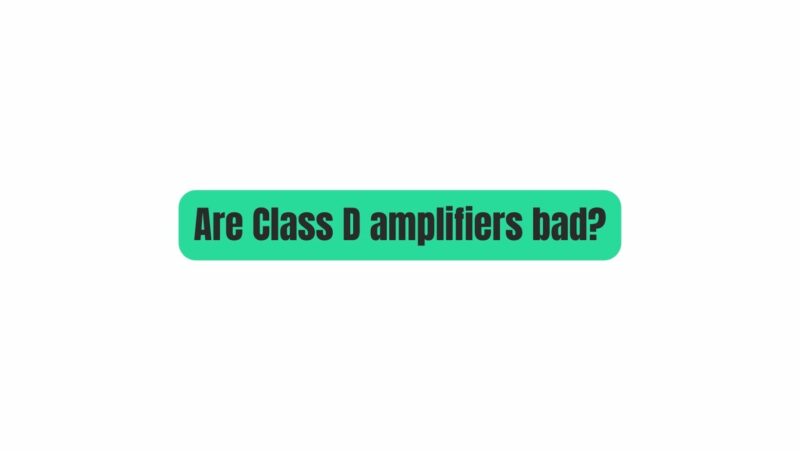Amplifiers play a crucial role in the world of audio, enhancing the power and fidelity of audio signals before they reach your speakers. Class D amplifiers, a relatively newer amplifier technology, have gained both popularity and scrutiny in the audio community. In this comprehensive article, we will explore the characteristics of Class D amplifiers, their advantages, potential drawbacks, and whether they can be considered “bad” in the context of audio amplification.
Understanding Class D Amplifiers:
Class D amplifiers, also known as digital amplifiers or switching amplifiers, differ from traditional Class A and Class AB amplifiers in their operating principles. While Class A and Class AB amplifiers use continuous analog signals to amplify audio, Class D amplifiers use a digital switching technique to reproduce audio signals. This switch-mode operation involves rapidly turning the amplification on and off to recreate the audio waveform.
Advantages of Class D Amplifiers:
- Efficiency: Class D amplifiers are highly efficient, converting a significant portion of electrical input power into amplified audio output. This efficiency results in less heat generation, making them more energy-efficient and suitable for compact, fanless designs.
- Compact Size: Their efficiency allows Class D amplifiers to be compact, making them suitable for portable audio devices, car audio systems, and home theater receivers.
- Reduced Heat: Unlike Class A amplifiers, which can generate substantial heat, Class D amplifiers produce minimal heat, making them suitable for integration into space-constrained applications.
- Power Efficiency: Class D amplifiers are well-suited for battery-powered devices due to their ability to conserve power.
Potential Drawbacks of Class D Amplifiers:
- Sound Quality: While modern Class D amplifiers have made significant advancements in sound quality, some audiophiles argue that they may not provide the same level of warmth and harmonic richness as Class A or Class AB amplifiers. However, this distinction is often subjective and may not be noticeable to all listeners.
- EMI/RFI Interference: Some Class D amplifiers can be more susceptible to electromagnetic interference (EMI) and radio-frequency interference (RFI) due to their high-frequency switching operation. Proper shielding and design are necessary to mitigate this issue.
- Complex Design: Class D amplifiers require sophisticated circuitry and digital signal processing (DSP) for accurate audio reproduction. This complexity can result in higher production costs and potential reliability concerns.
- Compatibility: Some Class D amplifiers may not be compatible with all types of speakers, as their high-frequency switching can interact with the speaker’s impedance characteristics. Proper matching is essential to ensure optimal performance.
Are Class D Amplifiers “Bad”?
Whether Class D amplifiers are “bad” depends on your specific audio needs and preferences:
- If you prioritize efficiency, compactness, and reduced heat generation, Class D amplifiers are excellent choices for applications like portable speakers, car audio systems, and modern home theater receivers.
- If you are an audiophile seeking the utmost in sound quality and are willing to invest in high-end audio equipment, you may find that traditional Class A or Class AB amplifiers offer a different sonic character that aligns with your preferences.
In conclusion, Class D amplifiers are not inherently “bad.” They offer distinct advantages in terms of efficiency, size, and power efficiency. However, their suitability depends on your specific audio requirements and personal listening preferences. As with any audio equipment, it’s essential to audition and assess amplifiers within the context of your audio setup and musical tastes to determine which amplifier type best meets your needs.


